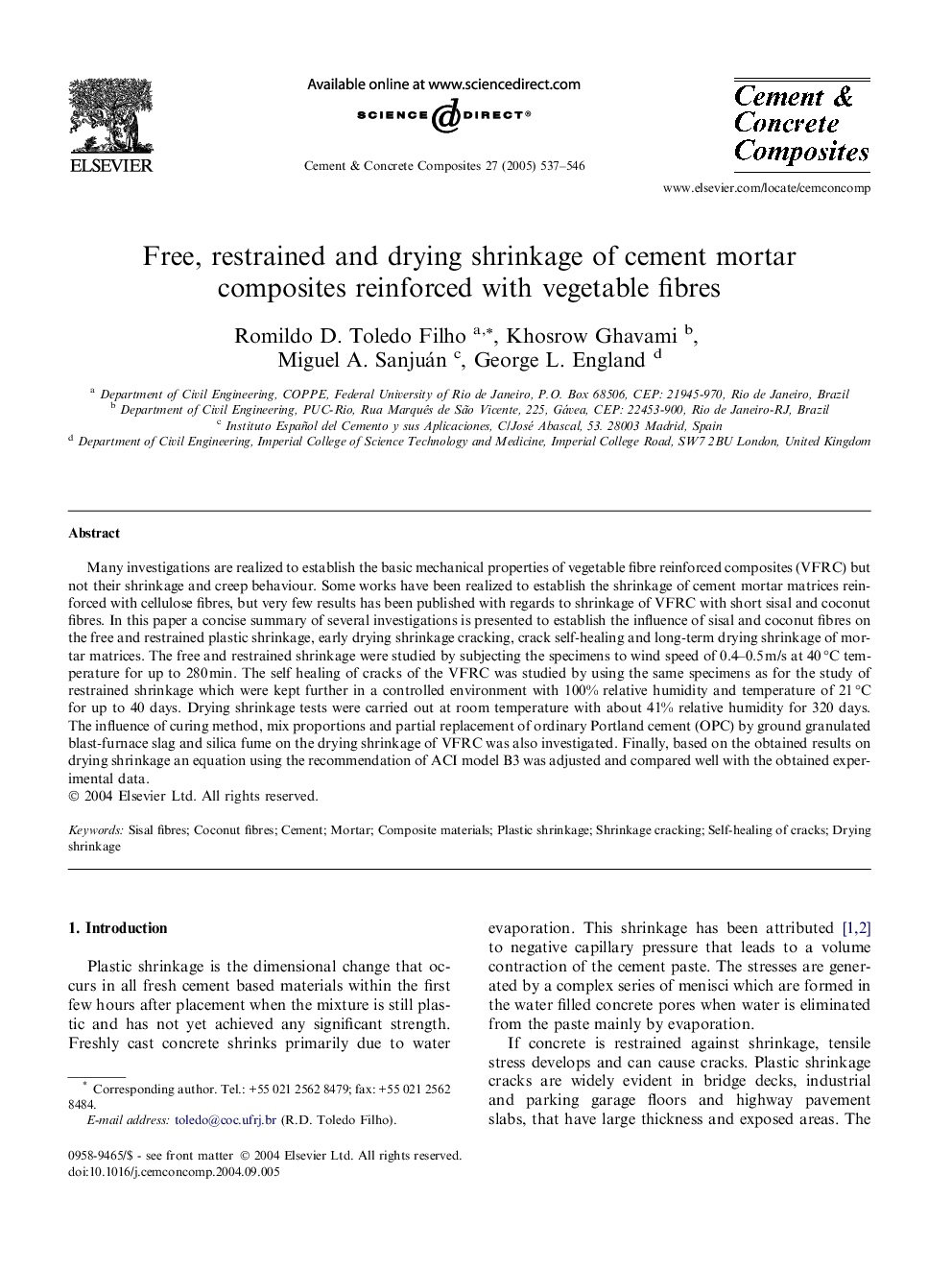| Article ID | Journal | Published Year | Pages | File Type |
|---|---|---|---|---|
| 10621979 | Cement and Concrete Composites | 2005 | 10 Pages |
Abstract
Many investigations are realized to establish the basic mechanical properties of vegetable fibre reinforced composites (VFRC) but not their shrinkage and creep behaviour. Some works have been realized to establish the shrinkage of cement mortar matrices reinforced with cellulose fibres, but very few results has been published with regards to shrinkage of VFRC with short sisal and coconut fibres. In this paper a concise summary of several investigations is presented to establish the influence of sisal and coconut fibres on the free and restrained plastic shrinkage, early drying shrinkage cracking, crack self-healing and long-term drying shrinkage of mortar matrices. The free and restrained shrinkage were studied by subjecting the specimens to wind speed of 0.4-0.5 m/s at 40 °C temperature for up to 280 min. The self healing of cracks of the VFRC was studied by using the same specimens as for the study of restrained shrinkage which were kept further in a controlled environment with 100% relative humidity and temperature of 21 °C for up to 40 days. Drying shrinkage tests were carried out at room temperature with about 41% relative humidity for 320 days. The influence of curing method, mix proportions and partial replacement of ordinary Portland cement (OPC) by ground granulated blast-furnace slag and silica fume on the drying shrinkage of VFRC was also investigated. Finally, based on the obtained results on drying shrinkage an equation using the recommendation of ACI model B3 was adjusted and compared well with the obtained experimental data.
Keywords
Related Topics
Physical Sciences and Engineering
Engineering
Industrial and Manufacturing Engineering
Authors
Romildo D. Toledo Filho, Khosrow Ghavami, Miguel A. Sanjuán, George L. England,
